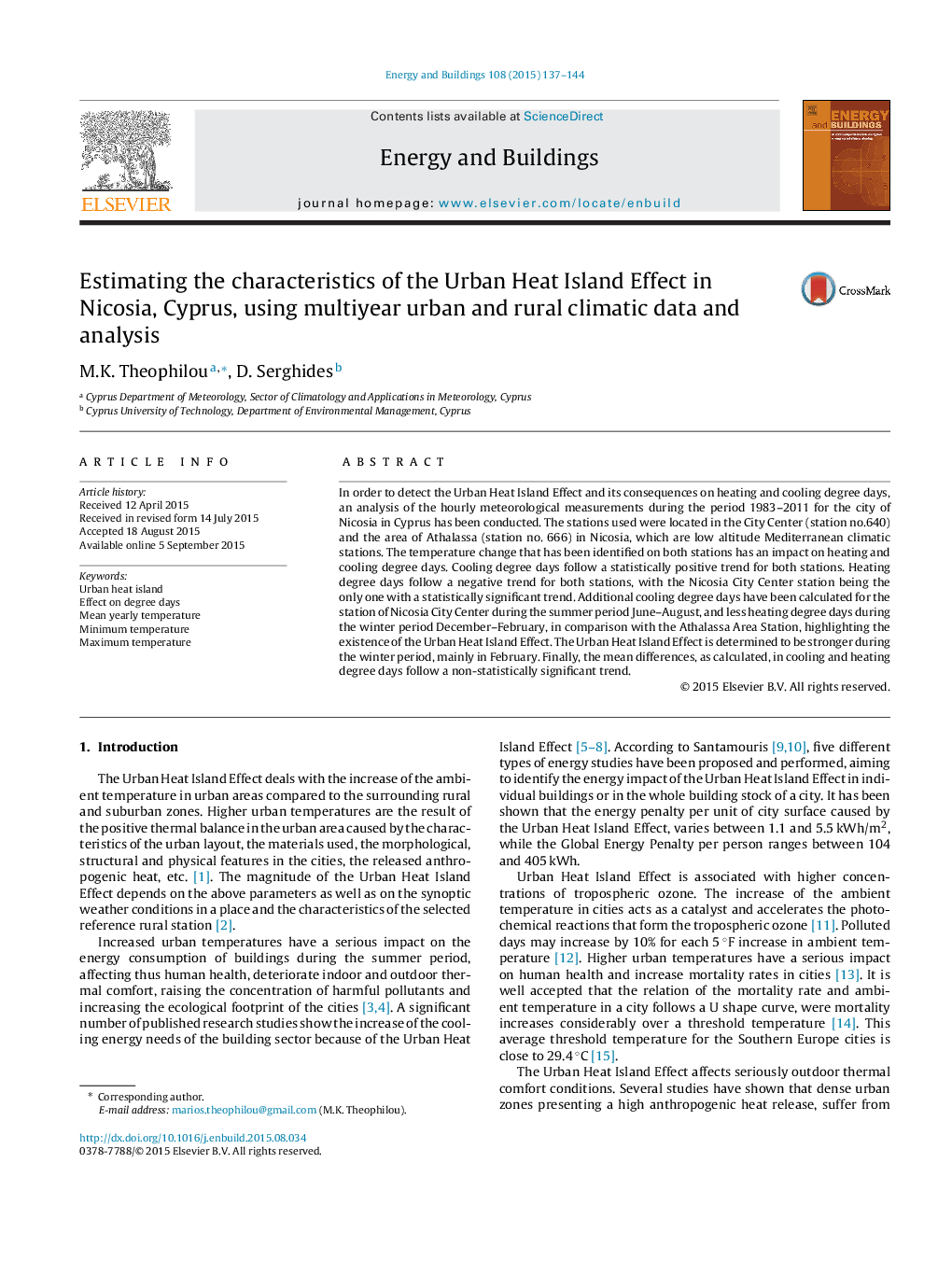| Article ID | Journal | Published Year | Pages | File Type |
|---|---|---|---|---|
| 6730991 | Energy and Buildings | 2015 | 8 Pages |
Abstract
In order to detect the Urban Heat Island Effect and its consequences on heating and cooling degree days, an analysis of the hourly meteorological measurements during the period 1983-2011 for the city of Nicosia in Cyprus has been conducted. The stations used were located in the City Center (station no.640) and the area of Athalassa (station no. 666) in Nicosia, which are low altitude Mediterranean climatic stations. The temperature change that has been identified on both stations has an impact on heating and cooling degree days. Cooling degree days follow a statistically positive trend for both stations. Heating degree days follow a negative trend for both stations, with the Nicosia City Center station being the only one with a statistically significant trend. Additional cooling degree days have been calculated for the station of Nicosia City Center during the summer period June-August, and less heating degree days during the winter period December-February, in comparison with the Athalassa Area Station, highlighting the existence of the Urban Heat Island Effect. The Urban Heat Island Effect is determined to be stronger during the winter period, mainly in February. Finally, the mean differences, as calculated, in cooling and heating degree days follow a non-statistically significant trend.
Related Topics
Physical Sciences and Engineering
Energy
Renewable Energy, Sustainability and the Environment
Authors
M.K. Theophilou, D. Serghides,
